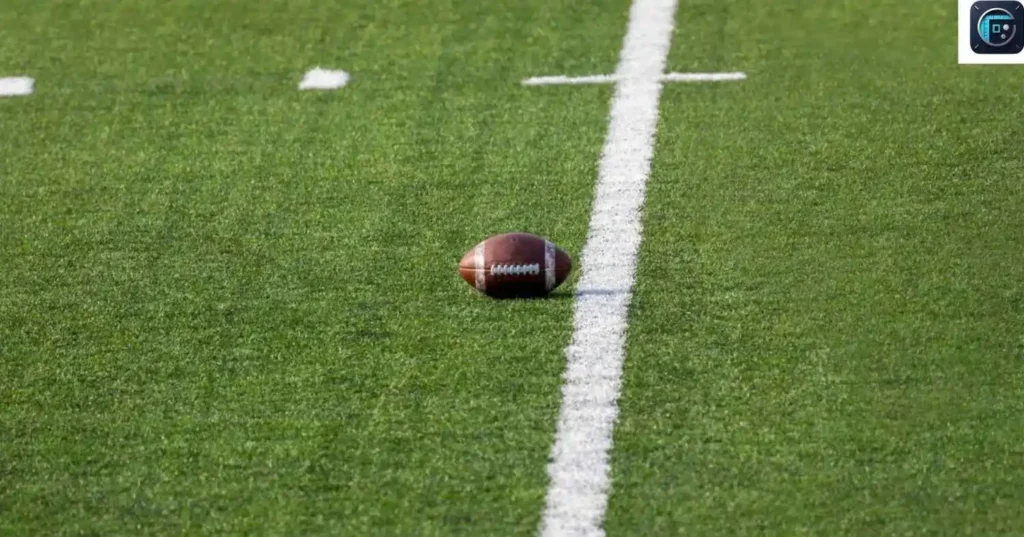Have you ever asked yourself, “How long is 100 feet?” It’s a question that pops up more often than you’d think—whether you’re trying to measure your backyard, visualize the length of a building, or compare distances when traveling. But unless you’re walking around with a measuring tape, 100 feet can be tough to picture.
That’s where real-world comparisons come in. By looking at familiar things that are around 100 feet long, we can easily understand and visualize this distance. From everyday vehicles to sports fields and towering trees, 100 feet shows up more often than you realize.
In this guide, we’ll explore well-known objects and structures that are roughly or exactly 100 feet in length. These examples aren’t just interesting—they’re useful for your daily life, especially when estimating distances, understanding scale, or just satisfying your curiosity.
How Long Is 100 Feet?
To put it simply:
100 feet = 1,200 inches = 30.48 meters = 33.33 yards
But raw numbers only go so far. What you really want to know is:
“What is 100 feet in real life?” And for that, we’ll look at things you already know and recognize.
Here’s a quick conversion table:
| Unit | Equivalent of 100 Feet |
| Meters | 30.48 meters |
| Yards | 33.33 yards |
| Inches | 1,200 inches |
| Stories (floors) | Roughly 10 stories (building) |
| Steps (average walk) | Around 40–50 steps |
How Far Is 100 Feet Visually?
If you’ve ever walked from one end of a tennis court to the other, you’ve covered almost 78 feet. Add just a little more, and that’s 100.
Another easy way to visualize it? Stand at one end of a football field end zone, and imagine walking about one-third of the field. That’s roughly 100 feet.
Want a more personal approach? The average adult walking stride is about 2.5 feet. So if you take 40 steps, you’ve probably covered about 100 feet.
Things That Are 100 Feet Long
Now, let’s look at real, famous, or practical things that are approximately 100 feet long, so you can visualize this length without second-guessing.
1. Football Field (End Zone to End Zone)

A standard American football field is 300 feet long from end zone to end zone. That means 100 feet equals exactly one-third of the field. Picture standing at one goal line and walking to the 33-yard mark—that’s 100 feet right there.
So, how long is 100 feet in football terms? It’s just a third of the field, a distance players sprint regularly. If you’ve ever been on the sidelines, you know it’s not a small distance—it’s easily visible and measurable.
2. Standard City Bus

Most city buses are about 40 feet long. Lining up two and a half buses bumper-to-bumper gives you a very close visual of what 100 feet looks like in real life.
Buses are common in urban areas, so this is a helpful mental picture. The next time you see a bus parked at the stop, imagine another and half of one lined up behind it. That’s your answer to how long is 100 feet.
3. Semi-Truck with Traile

A full-length semi-truck and trailer can measure around 70 to 80 feet. Add a small car or pickup in front of it, and the entire setup stretches to approximately 100 feet.
When you’re on the highway and a truck passes by, take a mental note. It’s nearly 100 feet long, and understanding that helps you visualize 100 feet better in terms of space and traffic.
Read More <<>> How Big Is 100 Square Meters? Things That Are 100 Square Meters
4. Lifeguard Tower Line-up

On many coastlines, lifeguard towers are spaced 100 feet apart. This setup ensures lifeguards have overlapping views and can monitor beachgoers effectively.
If you walk along the beach from one tower to the next, that stroll equals 100 feet. It’s a great visual and practical way to measure how long 100 feet is in everyday scenery.
5. Swimming Pool (25-Meter Recreational Pool)

A typical 25-meter pool is roughly 82 feet long. Add about 18 more feet, and you’ve got your full 100-foot stretch—easy to picture if you’ve ever swum laps.
Four widths of a standard pool or just over one length plus some walking space equals 100 feet. It’s a great example for swimmers or anyone familiar with pool measurements.
6. Cessna 208 Caravan (Wingspan)

The Cessna 208 Caravan has a wingspan just under 53 feet. Park two of these planes side by side, and you’re looking at a nearly perfect 100-foot visual.
Aircraft measurements can be deceiving, but when you’re on the tarmac, you’ll see just how long that is. It’s a clean way to get a feel for how long is 100 feet using aviation references.
7. Skyscraper Floor Height

On average, each floor in a skyscraper measures about 10 feet in height. Stack 10 floors, and you’ll reach the 100-foot mark.
It’s an easy way to visualize vertical height. Next time you’re near a tall building, count 10 stories upward, and you’ll know exactly how tall 100 feet looks.
8. Tennis Court (Doubles Length)

A doubles tennis court is 78 feet long, so adding about 22 feet makes it an even 100. Picture standing at the base line and extending the court with a few extra steps.
If you’ve ever played or watched tennis, you already have a great reference. The distance from one end of the court to beyond the back fence is close to 100 feet.
9. Jet Aircraft: Boeing 737-500

The Boeing 737-500 is approximately 101 feet long, making it an almost exact match for our measurement.
When you board one of these jets, you’re walking the length of 100 feet. It’s a real-world example that passengers experience without even realizing it.
10. Cricket Pitches

A cricket pitch measures 66 feet (22 yards) from one end to the other. Lining up 1.5 pitches gives you 99 feet—close enough to call it 100.
For cricket fans, this is an easy comparison. Think of it as running from one end of the pitch to the middle of the next one, and you’ve got a rough sense of how long 100 feet really is.
11. One-Third of a Football Field

A repeat of our earlier entry, but worth noting again: One-third of a football field is 100 feet. It’s among the most common and helpful comparisons.
It’s often used in building plans, safety markings, and land surveying. This reference sticks easily, especially for sports lovers.
12. A Basketball Court

An NBA basketball court is 94 feet long—just 6 feet short of 100. That means you only need a step beyond the hoop to reach 100 feet.
Basketball fans, this one’s for you. Picture standing under one basket and walking just a little past the other side, and that’s how long 100 feet feels.
13. Two Railroad Cars

Each railroad boxcar is about 50 feet long. So when two are coupled together, the total length is right at 100 feet.
This comparison is perfect for anyone who’s seen or ridden on trains. Watching two boxcars slowly roll by is a great way to lock the distance into memory.
14. Blue Whale

The blue whale, Earth’s largest animal, can grow up to 100 feet in length. That’s as long as a jet or a football field third.
Imagine swimming next to a creature the length of two city buses—that’s a powerful image. Nature provides one of the most awe-inspiring examples of how long 100 feet really is.
15. A White Pine Tree

The eastern white pine often grows to about 100 feet tall. These majestic trees tower above most others and make a great vertical comparison.
If you’ve ever stood under one and looked up, you’ve seen what 100 feet looks like from bottom to top. Trees make measurements feel real—especially in forests or parks.
Why Is 100 Feet an Important Measurement?
You’ll find 100 feet used in construction, sports, landscaping, aviation, and safety regulations. Fire codes often reference 100-foot distances. Land surveyors, engineers, and even homeowners use this measurement when marking out property lines or planning driveways.
It’s also important in everyday safety—like keeping 100 feet of distance from fire hydrants in some areas or maintaining space behind large vehicles. Whether you’re measuring your backyard or visualizing a no-parking zone, 100 feet is a practical and versatile benchmark.
What Does 100 Feet Look Like?
Understanding the length of 100 feet can be tricky without something to compare it to. We use feet all the time—for measuring homes, sports fields, and distances—but unless you’re holding a measuring tape, it’s hard to picture exactly how far that is.
So how long is 100 feet in the real world? Think about standing at one end of a basketball court and looking all the way to the other. Or imagine laying two and a half city buses end to end. Suddenly, that number becomes a whole lot more real.
FAQ’s
Is a football field 100 feet long?
Not quite. A full football field (without end zones) is 300 feet long. So 100 feet is one-third of a football field. It’s a useful benchmark, especially when you need a quick mental reference for that distance.
Football fields make it easier to visualize 100 feet because they’re familiar to many people. If you’ve seen one in person, you already have a sense of just how far 100 feet stretches.
How long is a 100-foot comparison?
A 100-foot comparison can be imagined using many real-world examples—like two and a half city buses, ten stories of a building, or a blue whale’s length. It’s not just a number; it’s a scale of space that’s easy to visualize when linked to familiar objects.
These comparisons turn numbers into something more tangible. The next time someone asks how long is 100 feet, you’ll be able to give them a whole list of visual references.
How big is 100 feet in a room?
In an indoor setting, 100 feet is huge. Most rooms in a home or office range from 10 to 30 feet in length. So a 100-foot room would be extremely long—think of a ballroom, a gymnasium, or a warehouse space.
If you’re measuring it in your home, you’d have to walk through multiple rooms or down a long hallway to reach 100 feet. It’s not your everyday interior dimension.
How much is 100 feet visually?
Visually, 100 feet is about the length of two railroad cars, or a Boeing 737-500, or ten stories of a building stacked on top of each other. It’s large enough to see clearly from a distance, but not so far that it’s out of reach.
When you’re outside, 100 feet can be estimated by watching a car drive past a few parked buses or a semi-truck with trailer. It’s a distance that’s both sizable and manageable.
How to measure 100 feet by walking?
You can measure 100 feet by walking approximately 33 to 40 steps, depending on your stride. On average, a person’s step length is between 2.5 to 3 feet.
To get a more accurate count, measure your own stride once and multiply. Or you can use a measuring wheel or a phone app with GPS distance tracking to get it just right.
Conclusion
So, how long is 100 feet? As you’ve seen, it’s not just a number—it’s a meaningful distance you encounter more often than you realize. From a blue whale’s size to a semi-truck on the highway, or even one-third of a football field, 100 feet is a measurement that shapes how we build, move, and understand space.
Whether you’re planning a layout, estimating distance on the road, or just curious, knowing how to visualize 100 feet using real-life examples can help you see the world a little differently. Next time someone asks, you’ll not only have the answer—you’ll have the comparisons, too.


